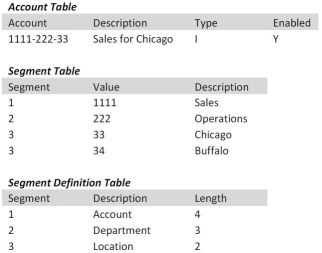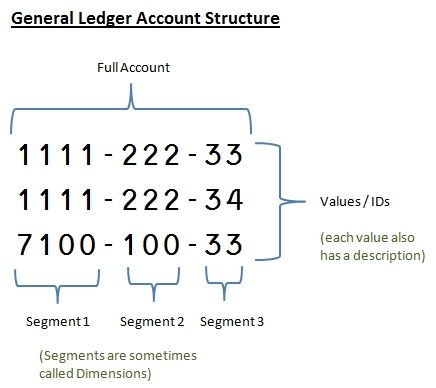In this brief article, we will examine the Multidimensional Chart-of-Accounts. Don’t forget to download the free Top 10 Tips for Organizing your Chart-of-Accounts Document at the end of this article.
Over the years, we have seen a lot of Chart-Of-Accounts (COA), and some are set up much better than others. There can be various reasons for this such as change in organizational focus. Perhaps, it’s the length of time the system has been used, staff turnover, or simply just poor design.
The intent of this article and the attached guide is to provide some tips on good COA design. Hopefully, we can help save you some time and get the most out of your financial reports.
Chart-of-Accounts Definition & Meaning
A multidimensional Chart-Of-Accounts (COA) is an account numbering system that has multiple segments (aka dimensions). It is typically used by larger organizations. These organizations need to track their assets, liabilities, equity, revenue, and expense transactions from more than one identifier within the general ledger. They are also, of course, running an ERP that supports this enhanced structure such as Microsoft Dynamics®, Epicor, SAGE, or others.
One example is a restaurant chain that has many locations. They cannot track revenue and expenses at just the account level but need to identify each transaction on a location by location basis. Therefore, they produce and analyze financial reports per location. This will enable management to know which location is the most profitable, the most expensive, has the best margins, where physical assets are located, and so on.
This example would require each transaction to be coded so that it identified two things. First, the main account (core, primary, object) segment and also the location number. In figure #1 below, there are three segments. This is because this organization also wants to track things on a departmental basis. This figure shows the “Full Account” (segment combinations that are used), the individual segment values and descriptions, and the definition.

For additional information, download our free 10 Tips for creating and organizing your Chart-of-Accounts (COA) guide.

Share:







